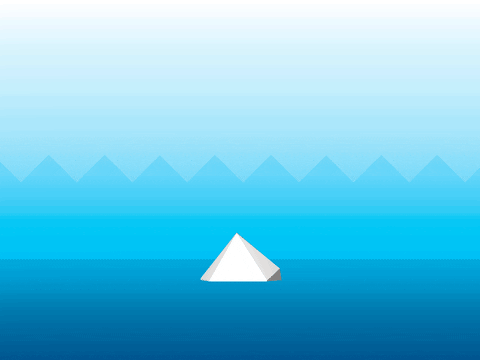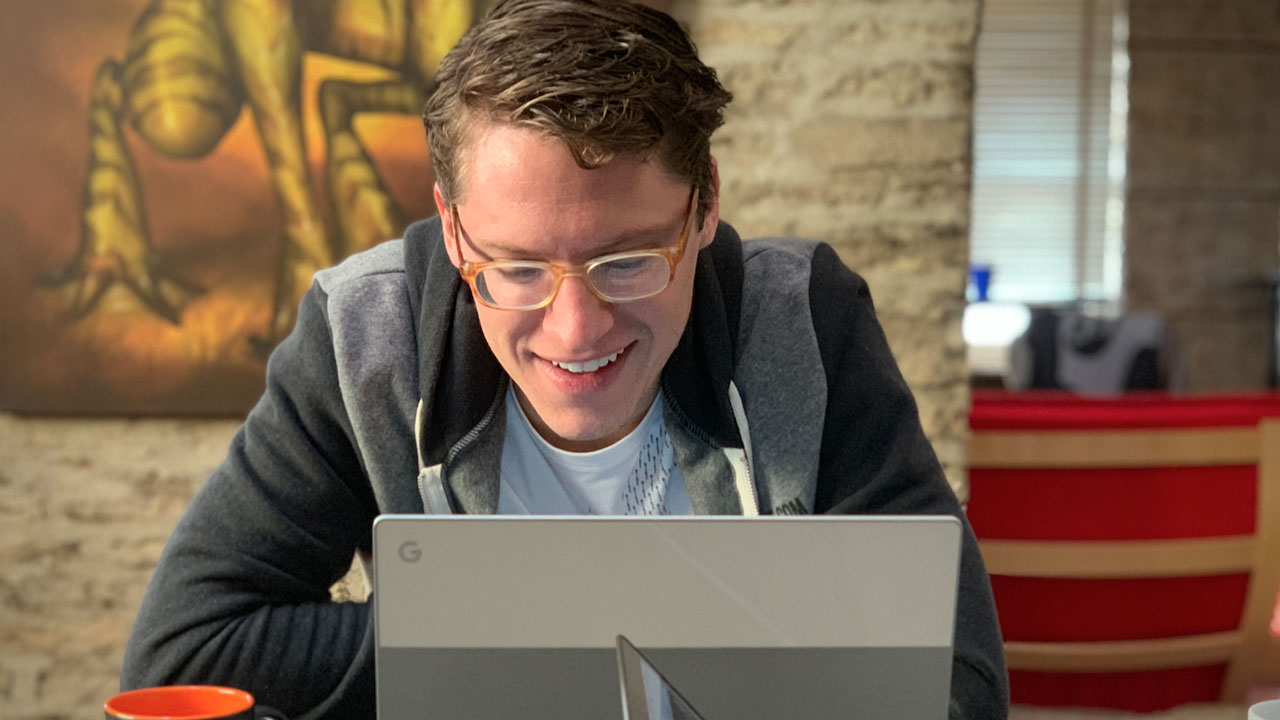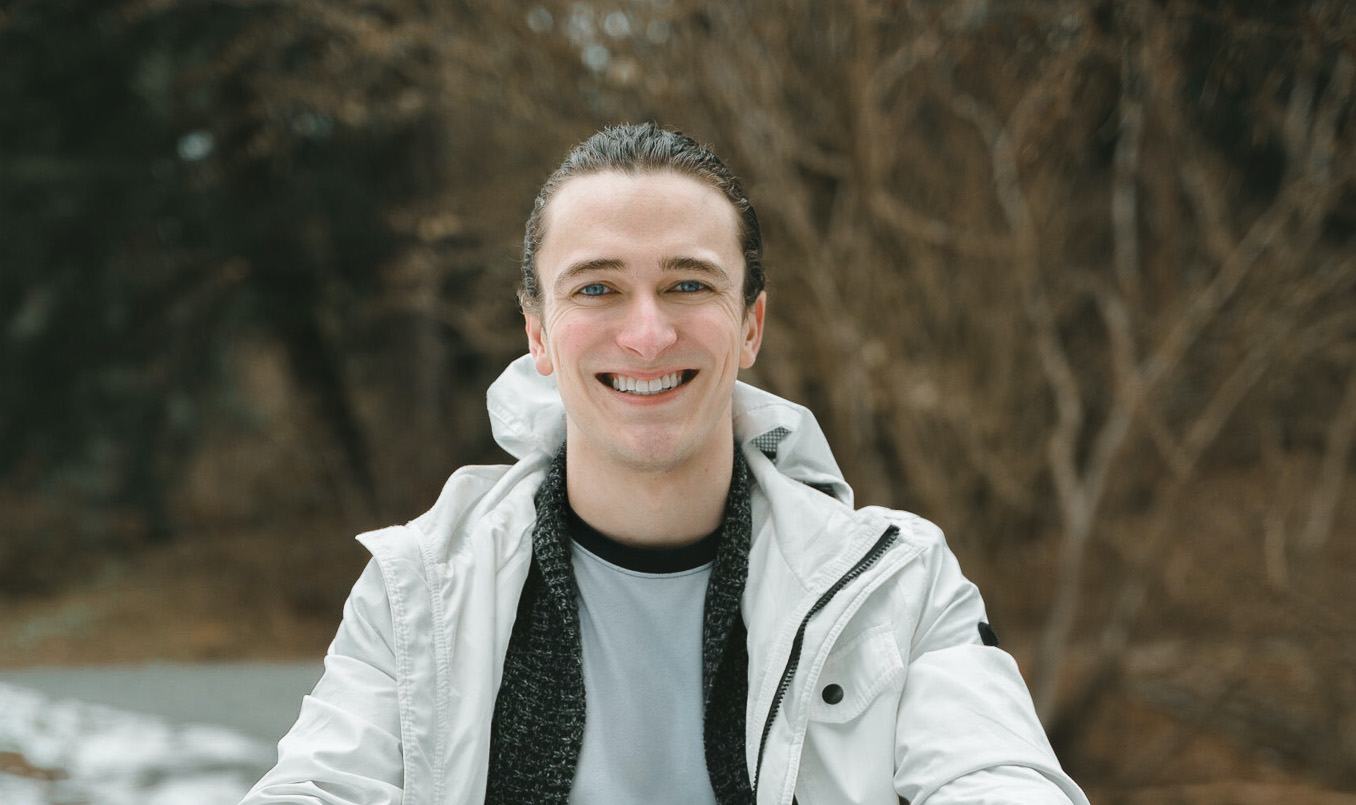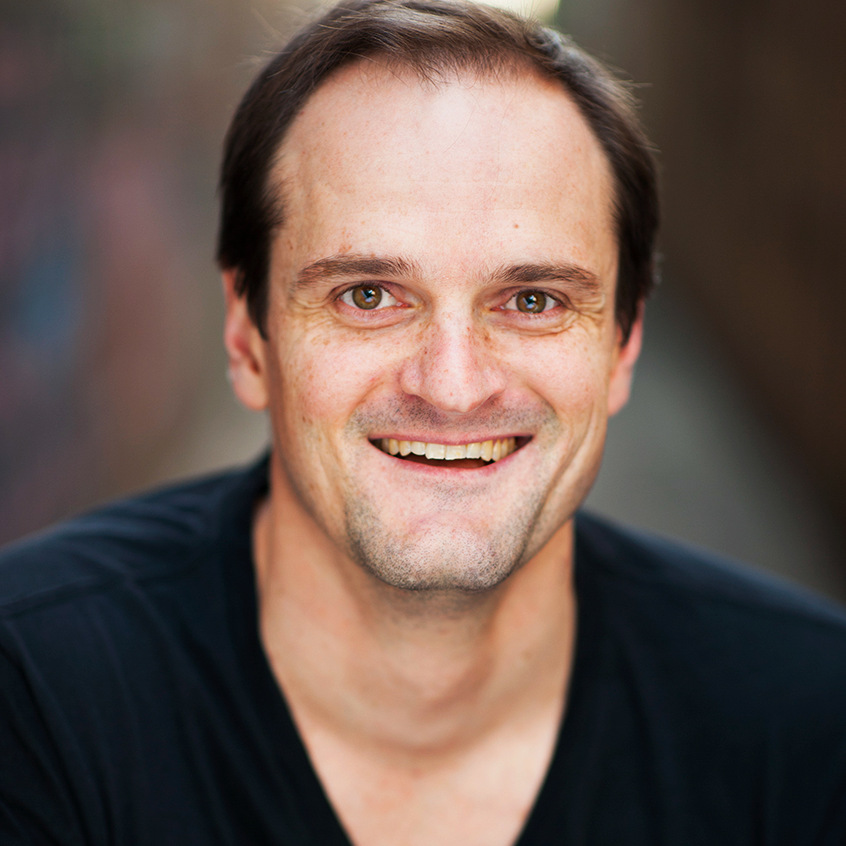
"If you're making a tutorial, you better know everything about the workflow."
"Blender is free - so Blender tutorials should be free, too."
"Making a tutorial means you are mostly describing your workflow."
"A good tutorial is about creating amazing artwork."
The truth about recording Blender courses*
*In this article, we use the terms "tutorial" and "course" interchangeably.
At CG Cookie, making Blender tutorials is our daily bread - and it comes with a side of misconceptions.
Understandably.
It's easy to look at the final video and think - 10 minutes of talking about a workflow? I can do that, too!
But there's a lot going on beneath the surface...

...or, rather, behind the camera.
CG Cookie's Trainers Explain How They Make Blender Tutorials
We talked to CG Cookie's CCC (Core Content Crew) about their experience recording tutorials - and what happens before they hit the "publish" button.

Kent Trammell has been with CG Cookie since 2013, masterminded some of our most iconic courses to date (sci-fi helmets, anyone?) and created Blender videos that reached tens of thousands of Blender learners around the world.

Jonathan Lampel has produced super-comprehensive courses like his most recent Fundamentals of Digital Lighting and currently supplies CG Cookie's YouTube channel with fresh Blender videos.
 Wayne Dixon is spreading Blender gospel from Australia and putting the "mate" in animation. Wayne is the author of CG Cookie's animation curriculum -- including his recent Fundamentals of Animation or the experimental crossover course Acting for Animators.
Wayne Dixon is spreading Blender gospel from Australia and putting the "mate" in animation. Wayne is the author of CG Cookie's animation curriculum -- including his recent Fundamentals of Animation or the experimental crossover course Acting for Animators.
"What is the hardest part of recording a tutorial?"
Even seasoned Blender instructors deal with hit-the-record-button anxiety: "I have to work through some insecurities," says Kent. "'Do I have enough knowledge about this topic? Could this be wrong? Is my accent funny?'".
Wayne seconds this: "I am concerned about giving 100% correct information...or passing on my bad habits," he adds. "People need to create their own!"
An additional challenge comes from recording long courses and keeping the momentum going. "Dense courses are a challenge in willpower," says Kent. "After months of researching, rehearsing, recording, and editing, it's easy for the drive to fade."
Jonathan's main focus is on keeping things engaging: "Watching someone model an object is actually quite boring most of the time," he says. "Showing the whole process without drowning out the crucial parts with tedium -- that is a part of the art."
"What makes a GREAT Blender course?"
Our three instructors are in agreement: a good Blender course will teach you successfully complete a workflow, while a great course will inspire you to take that workflow -- and create something that is uniquely yours.
If a course does that in a way that is fun and easy to remember, it's a winner!

Jonathan Lampel's workspace
"How long does a Blender course take to record?"
The annoyingly vague answer is: It depends...but most likely much longer than you think.
"A standalone 10-minute video can take up to 1 week - and even 2 weeks isn't unusual," says Kent, adding that a big part of the work is spent on editing the video.
Jonathan estimates anywhere between 1 to 10 hours of work per 10 minutes of the final video.
"What are some challenges specific to making Blender tutorials ?"
Blender is a living organism that never stops evolving -- which can pose a huge challenge for Blender teachers.
"It's not uncommon that a tutorial I made last week is technically outdated this week," says Kent.
Blender is also free - which makes some users question paying for Blender education. If the software is free, the training should be free, too - is what some think.
"This is a common misconception about the nature of open-source," explains Kent. "Sure, the software is free, but time is never free. Blender's primary developers are deservedly paid salaries to ensure that high-quality development is sustained and organized. High-quality Blender training works similarly. Having a job that's commonly questioned in this way can be challenging but people usually understand over time," he adds.

Wayne Dixon's setup for recording tutorials
"What software and hardware do you use for recording?"
Computer graphics require significant resources. If you're running a screen recording software on top of that, you better have the hardware to back you up -- here is what our authors use.
Kent's software and hardware
Microphone: Rode NT-USB
Recording software: Open Broadcaster Software (OBS)
Video editing: Kdenlive ("Though I'm always looking out for a better open-source editor!")
Audio editing: Audacity
Image editing: Krita
Jonathan's software and hardware
"I use a Blue Snowball mic and OBS to record. I'll edit in Premiere Pro and then master the audio in Audition."
Wayne's software and hardware
Operating System: Mac OSX
Hardware: 4.2 GHz i7 16 GB Memory NVIDIA GeForce GTX 1050 Ti 4 GB
Camera: Logitech HD Pro Webcam C920
Software: OBS for screen recording
Microphone: MXL 440/441 ("Mostly, I use the 441 because it picks up less computer fan.")
"What's your pet peeve when recording?"
Kent is wary of overusing filler phrases: "'We're going to...', 'Ok so let's...', 'Yeah I'm happy with that.' -- I remove truckloads of these during editing!"
Meanwhile, Jonathan wrestles with his PC sometimes: "It has a super weird issue where I have to restart it before recording -- or else I get skipped audio frames. I've spent many hours looking into it but never figured it out, so I just reset every time."

Kent Trammell in his recording den
"Any weird obstacles you deal with when recording?"
CG Cookie operates as a 100% remote team which means all our instructors work from home. This brings special challenges (and we have some tips on how to ace remote work!)
"People are always ringing the doorbell while I'm recording!" says Jonathan. "The speaker is right outside my office door and my housemates are constantly ordering things from Amazon."
Kent seconds the noise issue: "It's typical for a lawn-mower, chainsaws or construction to start in my neighborhood without warning -- and last for 2 hours precisely as my mouse hits the record button." But even when the stars align and all is quiet, accidents can still happen: "More than once, I've recorded a video only to discover my mic was muted," says Kent. "Of course, in my head this wasted take is the best I'll ever do and it's a major shame that it's lost forever."
Additionally, Kent and Wayne are both Blender dads which takes the art of recording training to a new level: "It's hard to resist my 2 kids bursting in my office to give me a hug," laughs Kent.
Wayne supplied video evidence of his trials as #BlenderDad
"What is the WORST thing about making Blender training?"
"YouTube trolls can be a real burden," says Kent. "My skin has certainly thickened over the years but sometimes it's still deafening. It's dumb how one bad comment can negate dozens of positives. In the end, it kinda comes with the territory though."
Wayne has his own way of dealing with trolls: "Youtube comments are notoriously bad -- which is why I never look at them."
For Jonathan, the worst part is knowing that at some point, you have to call it done: "The worst part is that we can't cover everything! My scope is always creeping -- but having a rough deadline certainly helps."
"And the BEST part about making Blender training?"
The three authors are in agreement: seeing how much people progress from our courses is the best reward.
"Seeing someone post their tutorial results and crediting your course as their guidance or inspiration is the best feeling," says Kent.
Wayne agrees: "The best bit is when users have those ah-ha moments where they figure something out and then can apply what they have learned outside of the tutorial space."
"How is the rest of CG Cookie team involved in training production?"
At CG cookie, team collaboration happens mainly at the beginning and end of course production. We brainstorm ideas as a group and agree on a topic.
Next, each instructor records the meat and potatoes of the training - and at the end, we usually collaborate again on trailers and promotional material for the course.
"During the training production, I get lots of feedback from Wes Burke and Kent that helps me to improve," says Jonathan.
"Occasionally, Kent and I tag teamed on a projects," says Wayne, "and I always enjoy that. I'm often asking the other instructors stuff like 'Hey Kent, how do I apply a texture to this object thingy here?' I can't know everything about everything, so I'm always happy to ask for help."
"As a Blender teacher, are there any misconceptions you'd like to clarify?"
"People think we get it right the first time," says Wayne. "But that's not the case. Each lesson is edited, which often means repeating the same sentence several times until you don't slur the words together like a drongo...or actually say what you meant to say without rambling on about something that isn't necessary."
"How do you know when the production of a course is finished?"
Wayne: Da Vinci said it best: 'A Blender course is never finished - only abandoned.'

Thanks guys for this article! I see you're all using OBS, but for the life of me, I can't get OBS to recognize Blender when set to Window capture. Is Display capture the only way for OBS to record Blender? Many thanks!
Thanks for this article! I am going to be recording some tutorials myself this year and the wisdom I am getting from these three guys is like gold.
I really enjoy to follow your courses/lessons, do the exercices and challenge myself.
I made so much progress since I suscribed here rather than watching random youtube tutorial.
Please continue to make a lot of great quality tutorials !
Great to (be back here) and get an indepth look inside that magical "CGCOOKIE jar", and learn how your crew keeps creating those great and brand new tutorials.
BONUS:
I have created a nice slideshow - called "The Art Of Knowledge Transfer" - which will help all tutorial maker (on the planet) to keep enhancing current educational skill set to the next level. You can download my tutorial from my Dropbox account via this link (30 pages, PDFf formatted, filesize ~6mb)
- https://www.dropbox.com/s/5hr3gmqjcsbpsnd/The_Art_Of_Knowledge_Transfer_v1_May_2020.zip
Feel free to spread it everyone who is in the education / tutorial-making / knowledge-transfer business.
Keep up the great work CGCookie team
Wait a minute... how is Wayne a Mac OSX and have that kind of hardware? What is going on there...
Also, such an eerie feeling seeing the workstations from the outside, I'm usually inside the little black box on top of the monitors. It's like stepping out of your house and seeing it for the first time.
I really like the tutors and courses and I think the great thing is that you guys do it and not only explain how to make something but also why is it this way and how it all comes together :) keep up great work :D
And thank you for making better artist of all of us :)
and there is some more CGCookie goodness!!
Personally I love how CGC gives you information that not only covers the how to, but the why and when. This has given me freedom to learn to create on my own. My experiments may not look professional level yet but hey, I felt confident that this was the place to learn.
SShawn I also tried recording myself and ended up tripping over my tongue.
Sigh...I found myself thinking about the need to go learn how to Edit a video. I know that will be coming soon.
Kudo's to the CGC team!
You can tell the amount of effort that is put into these videos. The substance is in the cookie dough.
While I love the feel of the tutorials and how easy they “appear to make” I got a feel for how hard they were when I tried recording some small tidbits on my own for 2-3 minutes. Sounding like a hunchback robot is probably my biggest frustration because I don’t sound like that in real life. This was a great write up.
Trolls ran out of bridges to hide under so one of them got smart and let his buddies in on the new internet hiding place: trolls rarely make great pieces of art themselves. And trolls never make great content. I like Wayne’s response. Just don’t look at the Youtube comments, haha.
To be honest I don’t mind some small interruptions like kiddos bursting in to give hugs. I also love the live-streams because they are raw and full of mistakes and humor and best of all: troubleshooting and we get to see the instructors live and talk with us.
CgCookie is a great balance of learning: worth every penny for my hobby growth and development. This is how I destress from long days at work. Thanks for giving me a reason for something to create rather than just numbing out on TV shows or only video games each night like I used to do.